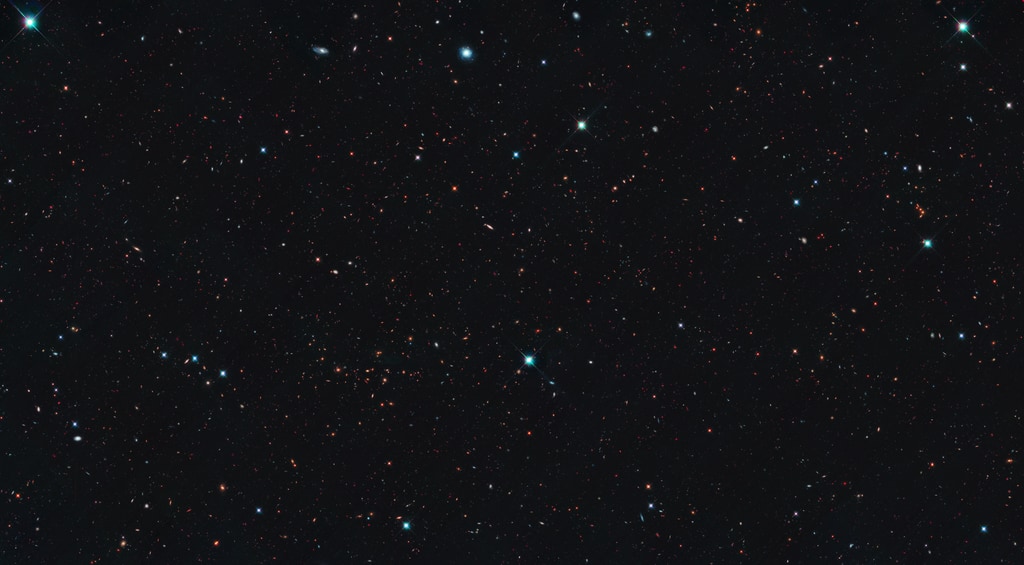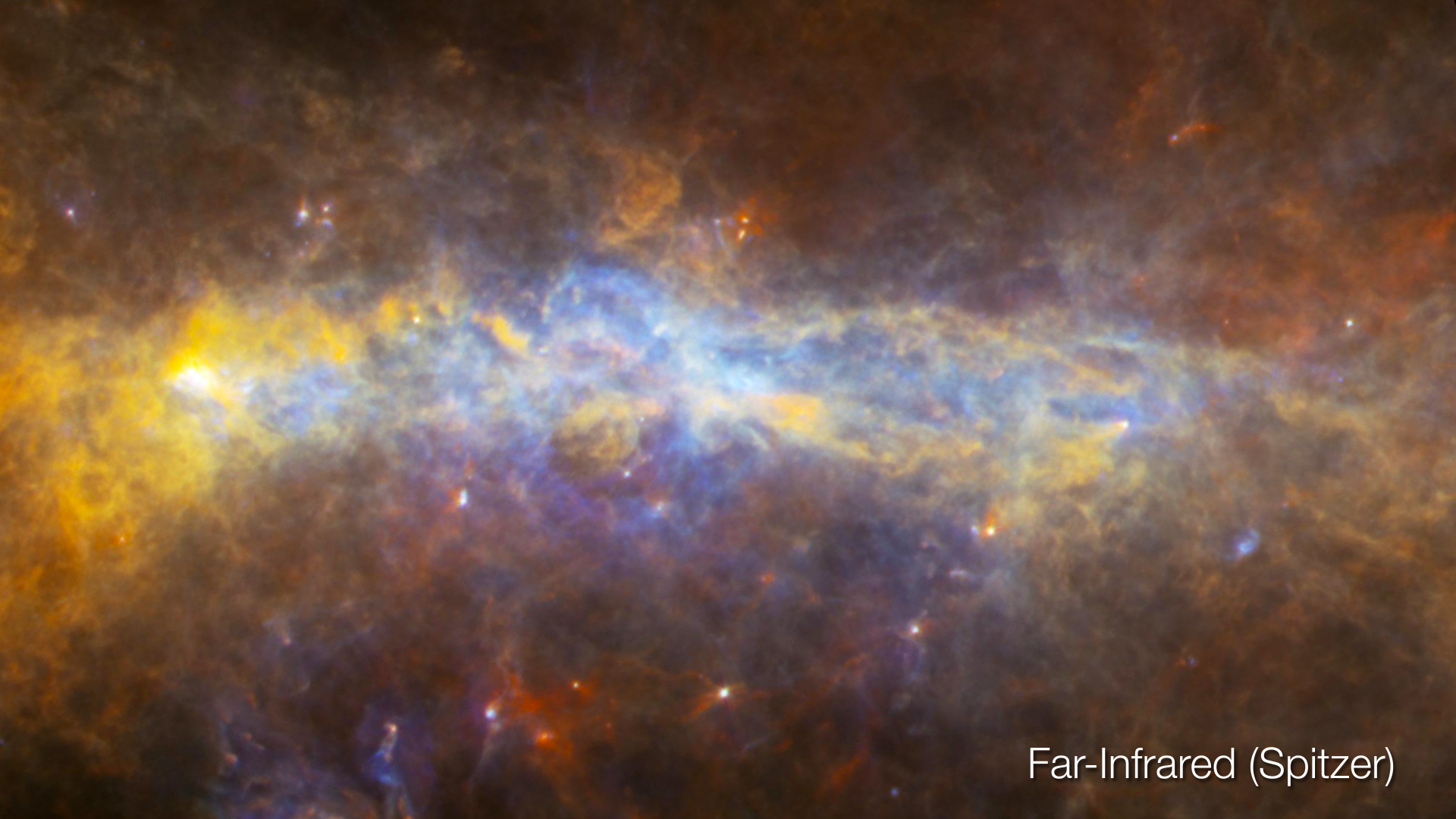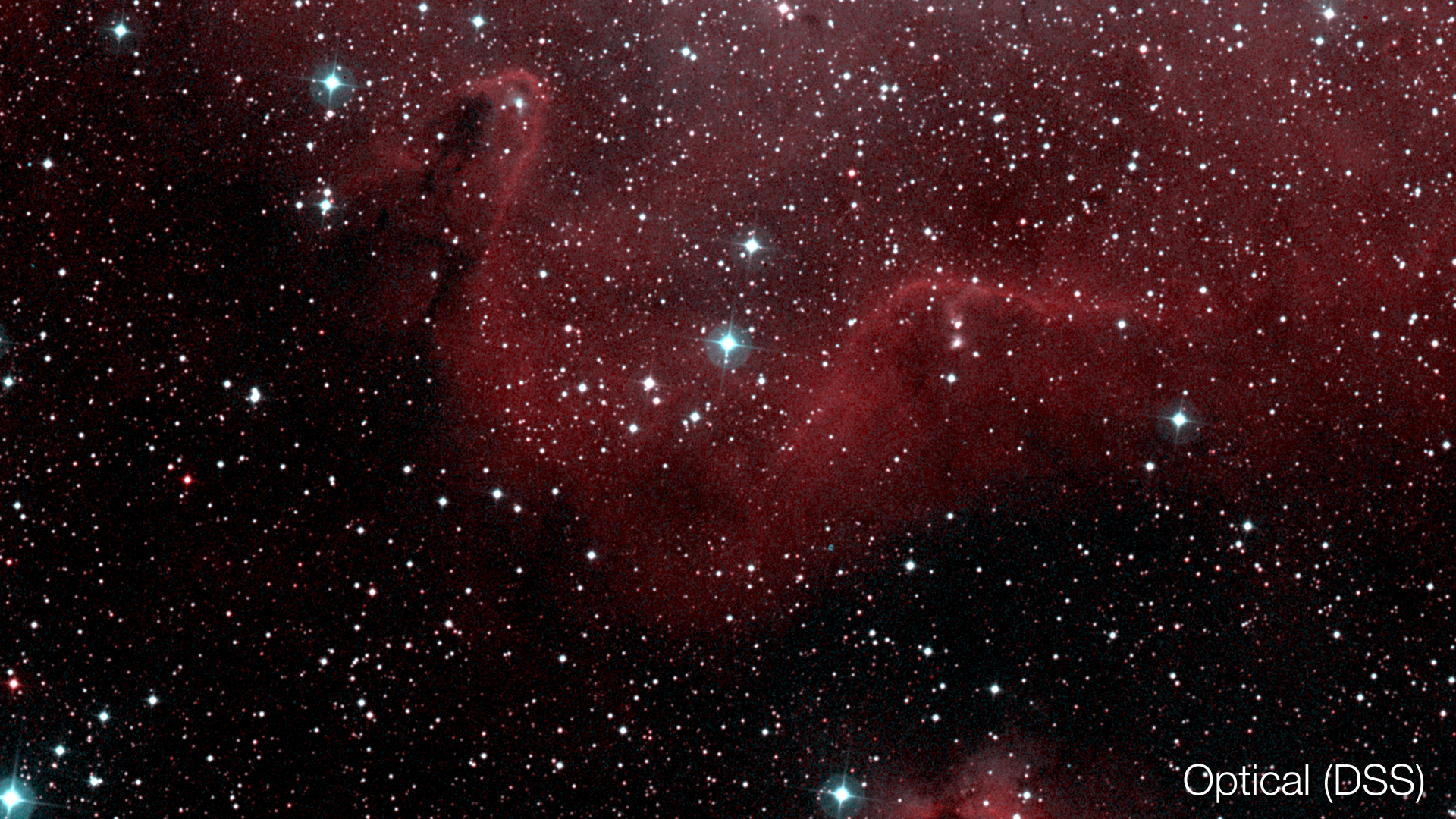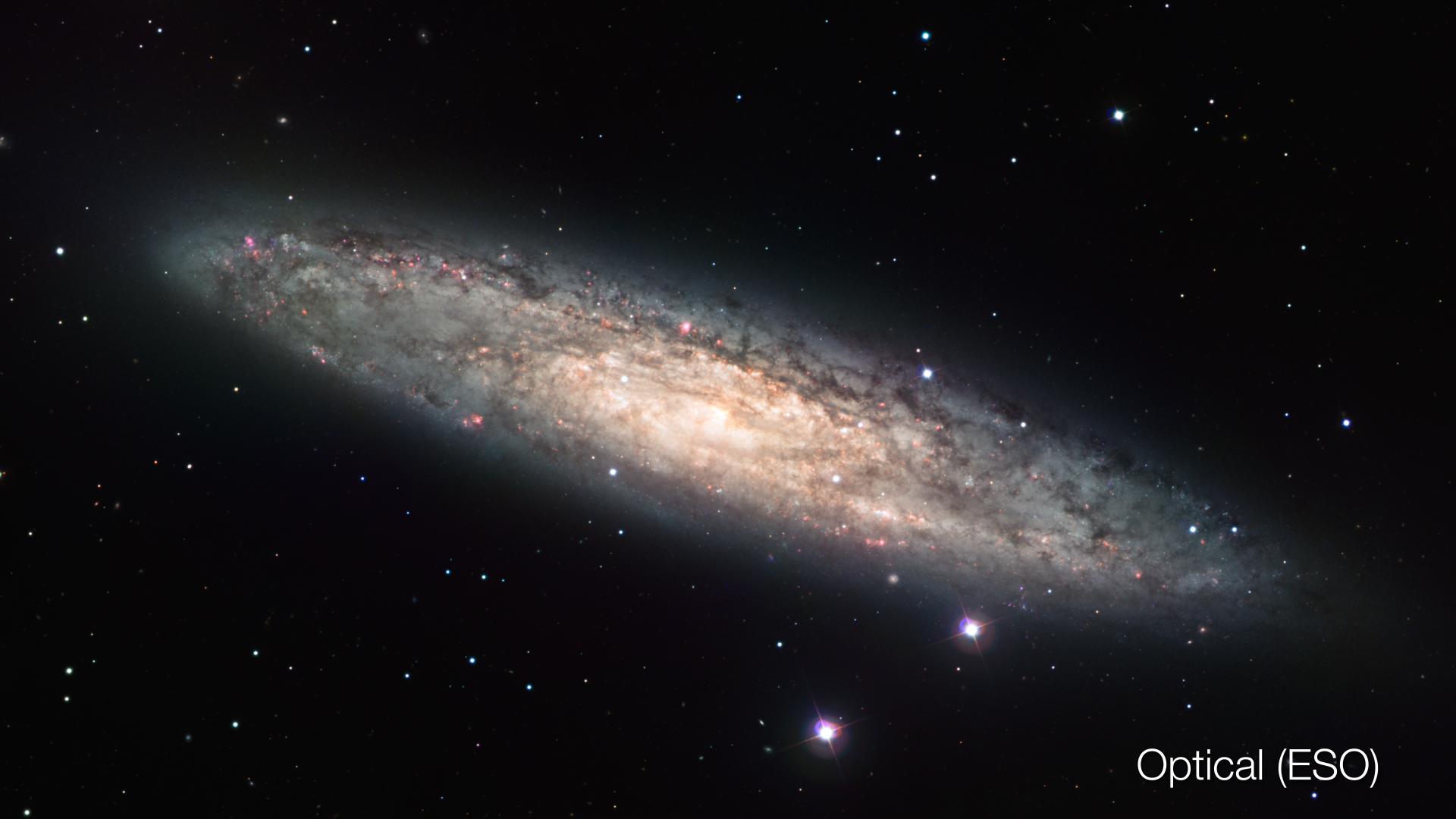Vision Across the Full Spectrum: The Crab Nebula, from Radio to X-ray
This animation shows the Crab Nebula from the lowest-frequency light (radio), to infrared, visible, ultraviolet, and finally X-ray.
The Crab Nebula (Messier 1) is the remnant of a supernova that exploded in the year 1054 AD. This mysterious "new star," as early sky watchers called it, was observed around the world and most notably recorded by Chinese astronomers. The supernova was triggered when the progenitor star abruptly collapsed onto its iron core, and rebounded to expel most of its layers of gas into a blast wave. This wave is seen as an optical and infrared set of filaments that continues to impact surrounding material. This material was expelled from the dying red giant progenitor star 20,000 years prior to the supernova. The ultra-dense remnant core, called a neutron star, is crushed to the size of a city. Spinning furiously, the neutron star sends out twin beams of radiation, like a lighthouse. A lot of this energy comes from the neutron star’s intense magnetic fields.
The initial radio image (from the Very Large Array) shows the cool gas and dust blown out by the supernova winds. The infrared (Spitzer) image shows synchrotron radiation, an unusual form of light produced by electrons trapped in magnetic fields. The infrared image also shows hot gas.The visible-light image (Hubble) shows the detailed filamentary structure of the blast wave as it impacts the surrounding material. The ultraviolet image (XMM-Newton) shows hot, ionized gas. Finally, the X-ray emission (Chandra) from high-energy particles ejected from the pulsar shows the expanding nebula. The bipolar structure represents a powerful jet of material funneled along the neutron star's spin axis.
This animation is the same as above, played twice as fast.

Ultraviolet, Visible, Radio, Infrared and X-ray image of the Crab Nebula.

Ultravioletimage of the Crab Nebula.

Visible image of the Crab Nebula.

Infrared image of the Crab Nebula.

X-ray image of the Crab Nebula.

Radio image of the Crab Nebula.
Credits
Please give credit for this item to:
Video: NASA, ESA, and G. Bacon (STScI)
Radio image: VLA/NRAO/AUI/NSF
Infrared image: NASA/Spitzer/JPL-Caltech
Optical image: NASA, ESA, and Hubble (STScI)
UltraViolet image: XMM-Newton/ESA
X-ray image: NASA/Chandra/CXC
-
Visualizer
- Greg Bacon (STScI)
-
Technical support
- Leann Johnson (Global Science and Technology, Inc.)
Release date
This page was originally published on Monday, May 7, 2018.
This page was last updated on Sunday, March 9, 2025 at 11:48 PM EDT.
Missions
This page is related to the following missions:Datasets used
-
[Spitzer Space Telescope]
ID: 690This dataset can be found at: http://www.spitzer.caltech.edu/
See all pages that use this dataset -
[Hubble Space Telescope]
ID: 831 -
[Chandra: Telescope System]
ID: 1002
Note: While we identify the data sets used on this page, we do not store any further details, nor the data sets themselves on our site.




























